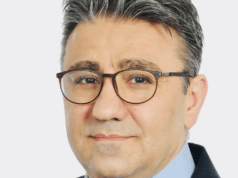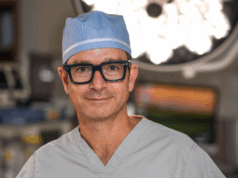
Preliminary experience with left subclavian artery (LSA) branched devices indicates low morbidity and stroke rates with high patency rates. This was the conclusion of Gustavo Oderich (Mayo Clinic, Rochester, USA) at this year’s Controversies and Updates in Vascular Surgery annual meeting (CACVS; 22–25 January, Paris, France), in a presentation on whether or not we need LSA branched endografts.
Oderich elaborated that thoracic endovascular aortic repair (TEVAR) without extension into Zone 2, and LSA coverage, is needed in up to 34–60% of patients. Furthermore, LSA coverage without revascularisation has been associated with higher rates of arm ischaemia and stroke, and with higher rates of spinal cord injury in patients with thoracoabdominal aortic aneurysms. The morbidity of carotid-LSA bypass is higher than previously reported, with a particularly high rate of phrenic nerve injury (25%).
Considering TEVAR with or without LSA revascularisation, Oderich detailed a paper by Rhiannon Bradshaw (East Virginia Medical School, Norfolk, USA) et al, which appeared in the Journal of Vascular Surgery in 2017. This reported that out of 96 patients undergoing Zone 2 TEVAR (42 without [44%] and 54 with [56%]), stroke occurred in 1.9% of patients undergoing revascularisation compared to 14.3% of patients undergoing LSA coverage. The respective figures for mortality were 11% and 14%.
Oderich then detailed thoracic aortic disease guidelines, noting in particular a Society for Vascular Surgery (SVS) systematic review, which found that that LSA coverage increases the risk of arm ischaemia, vertebrobasilar ischaemia, and possibly spinal cord ischaemia (SCI) and anterior circulation stroke. European practice guidelines state that LSA revascularisation should be considered in patients at risk for neurological injury undergoing TEVAR.
Exploring the risk of endovascular thoracoabdominal aortic aneurysm (eTAAA) repair, with intentional occlusion of hypogastric and vertebral arteries, Oderich referenced a paper by Matthew J Eagleton (Massachusetts General Hospital, Boston, USA) et al, published in the Journal of Vascular Surgery, which found that occlusions of one single collateral bad (hypogastric or vertebral) was associated with significantly higher rates of immediate SCI post-fenestrated or branched EVAR (F/BEVAR) and with lack of recovery.
Oderich then considered morbidity of carotid-LSA bypass by mentioning a paper by Soraya L Voigt (Duke University Medical Center, Durham, USA), from the Journal of Vascular Surgery in 2019. This paper referenced a study that included 112 patients treated at a single centre. Early complications occurred in 29% of patients and primary patency was 97% at five years.
In terms of the Mayo Clinic experience with the LSA Gore TBE, the centre enrolled ten patients in either a prospective feasibility or pivotal study. They reported no neurological events, no type Ia or III endoleaks, no reinterventions, no LSA occlusions, and the median follow-up was two and a half years.
Finally, Oderich detailed the Medtronic Valiant MONA LSA early feasibility and feasibility studies. The former investigated an off-the-shelf, modular approach based on the Valiant platform and involved a pre-cannulated LSA cuff using a dual wire via a femoral approach. Nine patients were enrolled and there was technical success in all patients. Three patients (33%) had minor, non-disabling strokes, and the two-year patency was 100%.
In the feasibility study, 32 patients were enrolled: 22 degenerative TAAs, four PAUs, and six chronic post-dissection TAAs. Preliminary results, presented by Frank Arco (Sanger Heart and Vascular Institute, Charlotte, USA) at VEITHsymposium 2019 (19–23 November, New York, USA) showed no perioperative strokes and 100% patency of the LSA branch.













